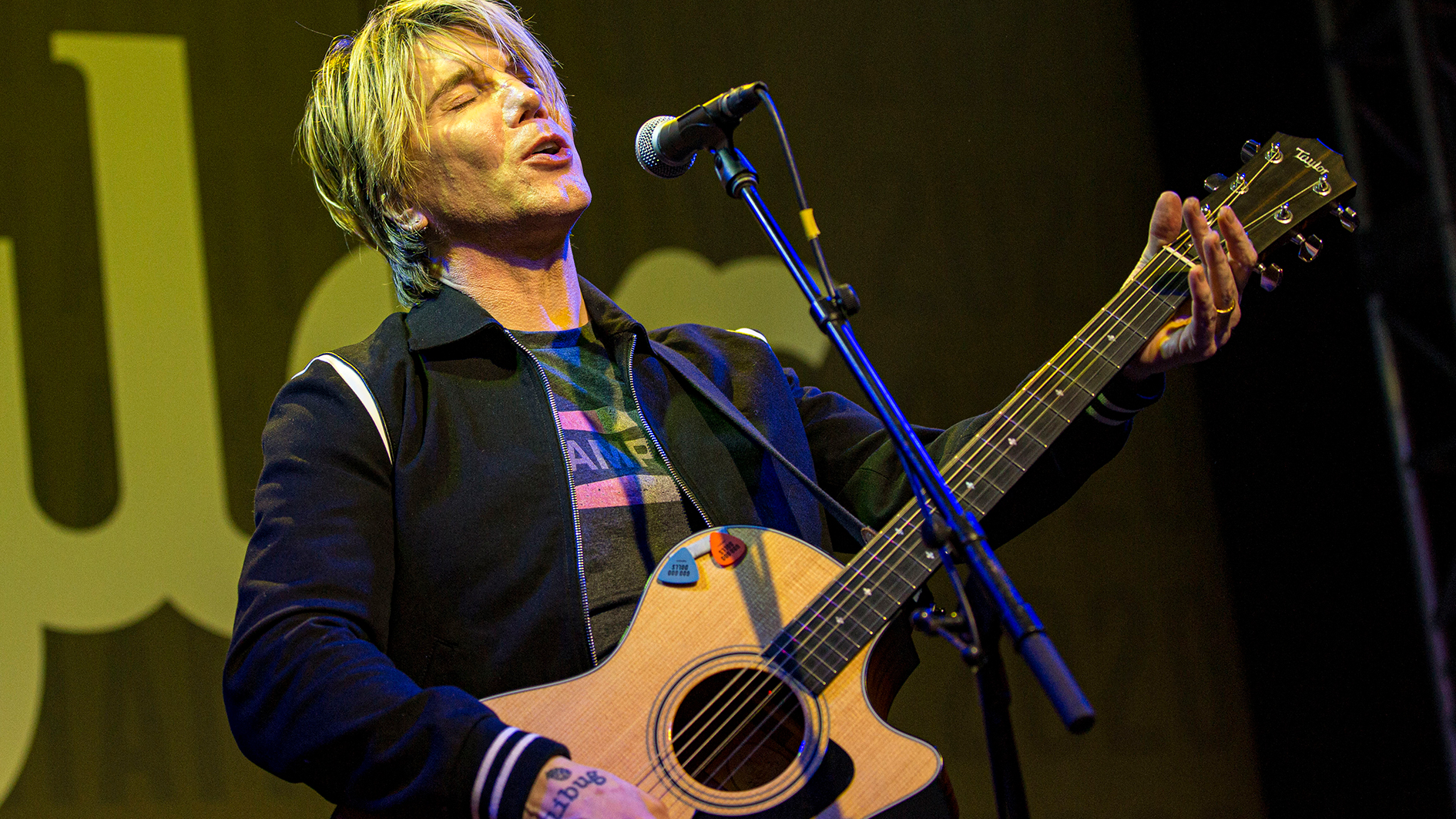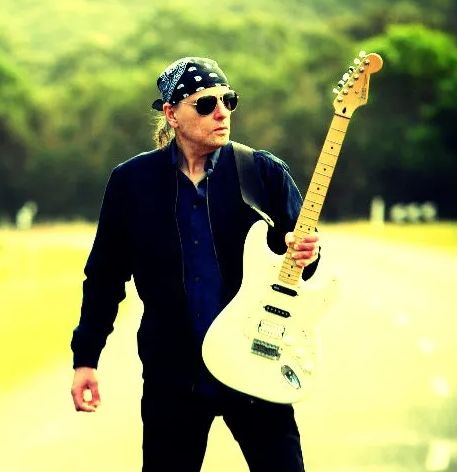John Rzeznik reveals the experimental guitar tuning secrets behind Goo Goo Dolls’ classic hits
The frontman details his approach to creating sonically distinct guitar parts, and shares the real tunings behind Iris, Big Machine, Let Love In and many more

Playing in non-standard tunings has become Goo Goo Dolls guitarist John Rzeznik’s modus operandi. But what sets Rzeznik apart from other guitarists is the fact that he’s developed a unique set of tunings that are far from the norm.
Since the band formed in the mid-'80s in Buffalo, New York, their emotive alter-pop-rock has been met with huge commercial success, but it’s Rzeznik’s self-styled tunings that have given the band their instantly recognizable chiming and spatial sound.
The band’s first two studio outings – their self-titled 1987 debut and its 1989 follow-up, Jed – featured bassist Robby Takac primarily on lead vocals along with a sound that mixed thrash-y punk with glam. It wasn’t until the band’s third album, 1990’s Hold Me Up, that the band’s signature sound began taking shape.
With Rzeznik taking over the principal lead vocalist role, his self-styled tunings also made their first appearance on a Goo Goo Dolls recording via the album’s closing track, Two Days in February. It featured a tuning that consisted of the high E string raised to F# and the B string raised to a C and with a capo at the second fret.
“The tunings came about because I was trying to fill space, as whenever I took a guitar solo, everything would drop out,” Rzeznik says. “There was no other guitar part because we didn’t have a second guitar player; we were a three-piece band that wanted to do this power-trio kind of thing that mixed punk, glam and garage rock. So all you'd hear would be the bass.
“One night I was watching Bob Mould, and he kept re-tuning his guitars between songs. I was like, ‘Wow, that’s crazy.’ So I started listening to his records closely to try and find out what was going on. I started hearing these notes that were kind of droning and ringing; it was like they were the engine driving the song. I thought that was really cool.”
With his interest piqued, along with a hunger to explore further, Rzeznik immersed himself in listening to other guitar players who were using alternative tunings.
Get The Pick Newsletter
All the latest guitar news, interviews, lessons, reviews, deals and more, direct to your inbox!
“I started doing some research and getting into players such as Stephen Stills and Jimmy Page and realized these people were doing this thing a long time ago,” he says.
“I’d basically sit there at night and just start tuning my guitar strings up and down until something sounded really cool. If something didn’t sound cool, I’d work with a standard tuning guitar and start running the chords up and down the neck, even though I didn’t know a lot of chords.
“But if my finger couldn’t reach something, I’d re-tune a string so that it’d make it into an easier shape. And that’s how I started coming up with all these chords.
“I was really trying to create something that was sonically different. I’d end up with guitars with four strings on them because two of the strings would pop off because I was experimenting on them.”
The combination of not knowing what he was playing and being limited with what was at his disposal proved to be innovative for Rzeznik. He had stumbled upon what became his signature style and sound.
“A song like Big Machine [from 2002’s Gutterflower] – [the guitar] has only four strings on it with this ridiculous tuning [D A A C#], yet it works," he says. "It created this whole set of overtones that’s really hard to replicate if you played it in standard tuning.”
While the tunings are paramount to the Rzeznik sound, other factors come into play, such as string gauges. Many of his guitars are restrung with a heavier gauge of strings.
“Somebody at D'Addario was nice enough to wind a bunch of strings for the low string on my Iris guitar, which is actually tuned down to a B,” he says. “It’s got a weird string gauge [.70–.15].
“The downside of doing these tunings is that a lot of them are so extreme in the way they’re twisting the neck and that kind of thing. I usually have to tune the guitar and set that guitar to the tuning – and every day or every couple of days I need to adjust the truss rod again. I have to prime the guitar to stay in that tuning. Especially for a song like Iris, as I can’t imagine what the tension is like on that neck! But, you know, it works. The rest of the strings aside from the B – they’re all D’s but in different octaves.”
Then there’s Rzeznik's use of capos.
“I use capos a lot and also partial capos,” he says. “I’ll use a capo on Sympathy [from Gutterflower] on the second fret, because sometimes I like how something sounds a whole step up. And if it feels OK, I'll actually sing it higher, so that’s the sort of weirdness that happens with all these tunings.
"In the studio, I’ll experiment with an alternate tuning on the guitar and then I’ll place these partial capos on it. You can capo the G string on the third fret and it'll create this really interesting sound, like a droning sound, and to my ears it's really pleasing. I love blasting that through a loud amp.”
Rzeznik believes his unschooled approach might prove a hindrance to other players, but it gives him the impetus for his tuning experimentations.
I consider myself more of a songwriter than a player. I’ll do whatever I need to do to get the message across or set the tone
“I’ll do a lot of my experiments late at night,” he says. “I’ll sit with a box of strings in my basement and experiment with an acoustic guitar and my phone and will come up with other tunings and then will record any chord shapes.
“And it’s really fun. I’m not an educated musician, as I never studied scales and all that kind of stuff, which I really want to at some point because I think I could be a better musician. I consider myself more of a songwriter than a player. I’ll do whatever I need to do to get the message across or set the tone and whatever.”
Finally, when it comes to guitars, Rzeznik also takes the less-travelled route. Early in his career he learned how necessity was the mother of invention.
“Another thing about when we were playing as a three-piece – and before we got another guitar player – is the fact that I had only one guitar. I couldn’t afford a second one,” he says. “It was an ESP Strat copy. I put a Hipshot on the low E string and then placed banjo tuners on the B and high E strings, so that I could tune the high E string up to a F# and the B string up to a C.
“And I could tune the low E string down to a B. I’d use different combinations of that. Then later on I got into Les Paul Deluxes with the mini humbuckers.”
His choice guitars now run the gamut from Epiphones to one of the newer kids on the block, Rock N’ Roll Relics. “I have a huge love affair with Gibson ES-330s and ES-335s, Epiphone Casinos and Epiphone SGs,” Rzeznik says.
“[My studio guitars] don’t go on the road with me because they’re old and expensive. So live, I use a white Rock N’ Roll Relics Lightning Bolt. I can play a ’67 ES-335, for example, and then play a Lightning Bolt 335-style guitar and it just kills. It’s an awesome-sounding guitar. Billy Rowe [Rock N’ Roll Relics founder] built this really beautiful Telecaster for me that has Filtertron pickups. It’s just such a cool-sounding guitar.”
Goo Goo Dolls guitar tunings
Here's a quick guide to some of Rzeznik's unique tunings, including the song title, tuning and string gauges.
Slide
DADGDD, .54 .42 .32 .24 .12 .12
Dizzy
EADGCG, GHS-GBL .10-.46
Black Balloon
DADADD, .54 .42 .32 .22 .12 .12
Better Days
DADAAD, .54 .42 .32 .22 .16 .13
Iris*
BDDDD, .70 .54 .32 .32 .15
Big Machine**
DAAC#, GHS-GBL .10-.46
Let Love In
CGCGGC, .70 .46 .36 .22 .22 .13
Name
DAEAEE, .54 .46 .34 .22 .12 .12
Sympathy
Capo 2, C#G#C#F#C#F#, .70 .46 .36 .24 .16 .12
Broadway
DGCFA#D, GHS-GBM .11-.50
* Iris uses only five strings with the first string (high E) removed.
** Big Machine uses only four strings. The third string (G) and first string (high E) are removed.
Joe Matera is an Australian guitarist and music journalist who has spent the past two decades interviewing a who's who of the rock and metal world and written for Guitar World, Total Guitar, Rolling Stone, Goldmine, Sound On Sound, Classic Rock, Metal Hammer and many others. He is also a recording and performing musician and solo artist who has toured Europe on a regular basis and released several well-received albums including instrumental guitar rock outings through various European labels. Roxy Music's Phil Manzanera has called him, "... a great guitarist who knows what an electric guitar should sound like and plays a fluid pleasing style of rock." He's the author of Backstage Pass: The Grit and the Glamour.
“It holds its own purely as a playable guitar. It’s really cool for the traveling musician – you can bring it on a flight and it fits beneath the seat”: Why Steve Stevens put his name to a foldable guitar
“Finely tuned instruments with effortless playability and one of the best vibratos there is”: PRS Standard 24 Satin and S2 Standard 24 Satin review
![Goo Goo Dolls – Iris [Official Music Video] [4K Remaster] - YouTube](https://img.youtube.com/vi/NdYWuo9OFAw/maxresdefault.jpg)

![Goo Goo Dolls - Name [Official Music Video] - YouTube](https://img.youtube.com/vi/yQOBUrRaPU0/maxresdefault.jpg)










